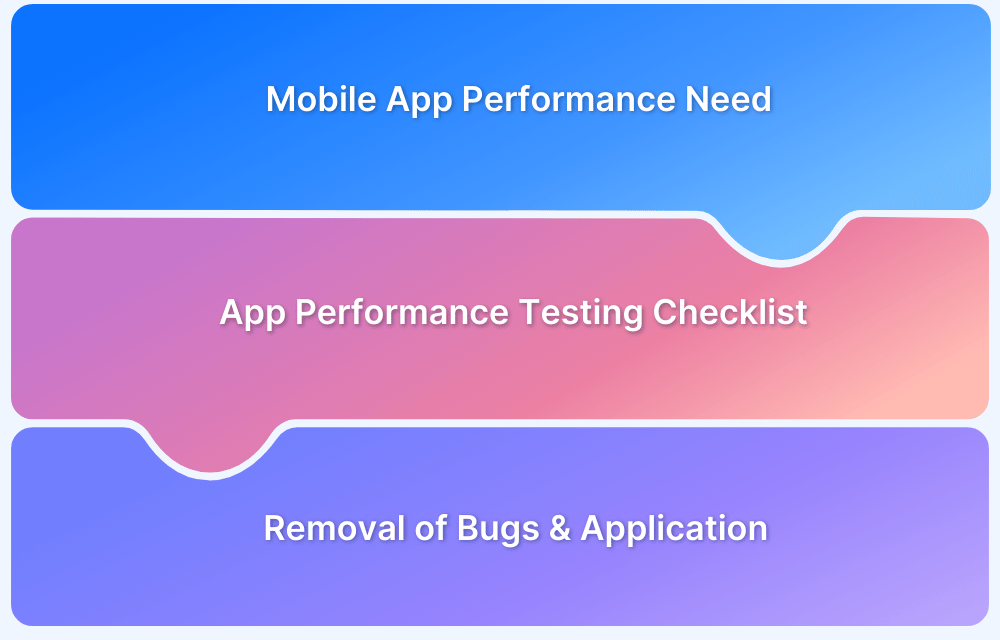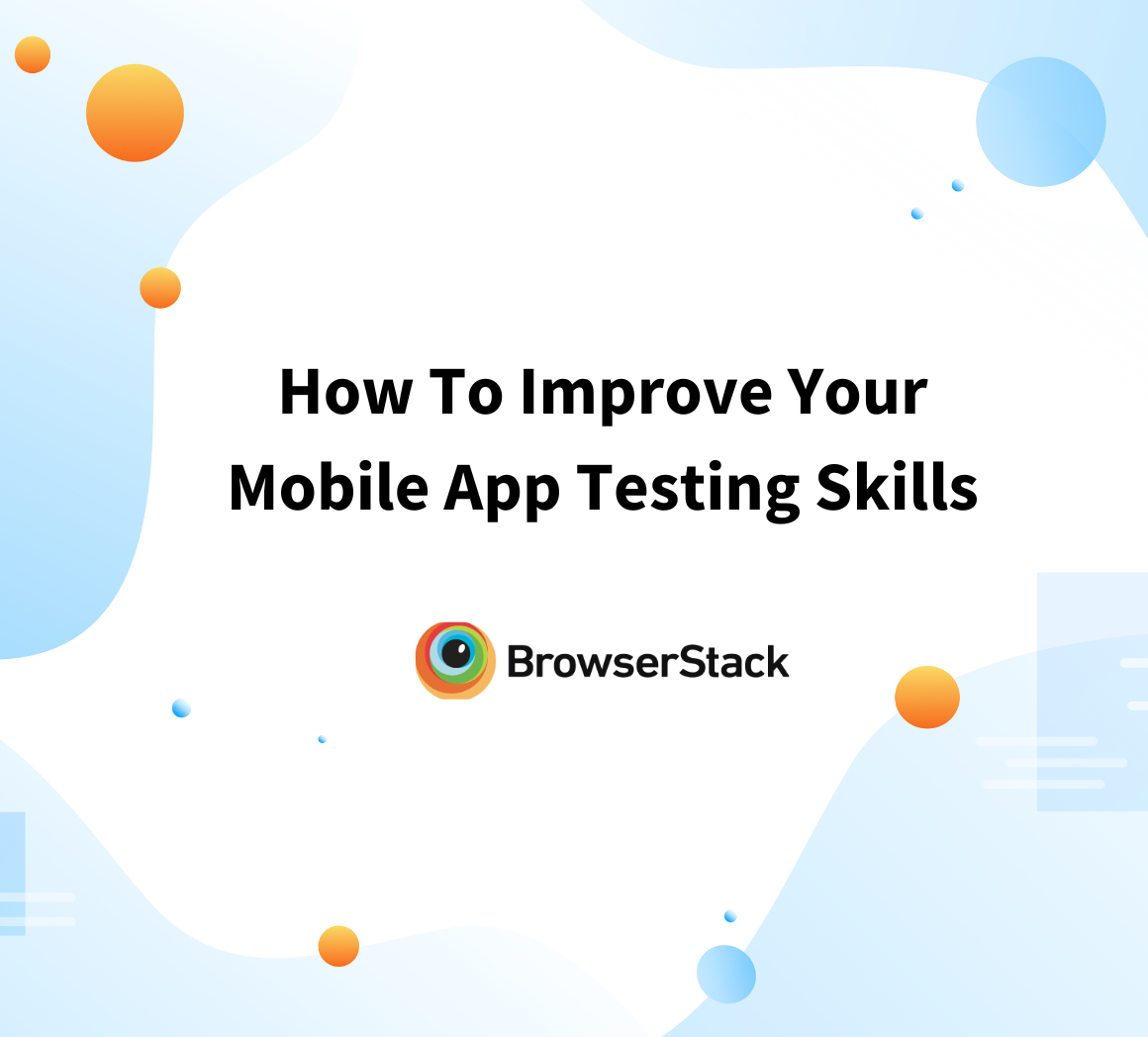Mobile testing ensures that applications function seamlessly across different devices, operating systems, and network conditions.
It plays a vital role in identifying performance issues, security vulnerabilities, and compatibility challenges before an app reaches users.
To achieve a flawless user experience, various types of mobile testing are conducted, each focusing on different aspects like functionality, usability, performance, and security.
This article explores the essential mobile testing types that help deliver high-quality, reliable applications.
Importance of Mobile Testing
Mobile testing ensures applications perform optimally across various devices, operating systems, and network conditions. It helps deliver a seamless user experience while maintaining security, functionality, and performance.
Key Reasons Why Mobile Testing is Crucial:
- Device & OS Compatibility: Ensures apps work smoothly on different screen sizes, resolutions, and operating systems.
- Performance Optimization: Identifies and fixes lag, crashes, or slow load times for a better user experience.
- Security Assurance: Detects vulnerabilities to protect user data and prevent security breaches.
- Network Variability Testing: Evaluates app behavior under different network conditions (Wi-Fi, 4G, 5G, offline mode).
- User Experience Validation: Ensures intuitive navigation, responsiveness, and accessibility for all users.
- Bug Detection & Fixing: Identifies functional defects early to reduce post-release issues and maintenance costs.
- Regulatory Compliance: Verifies that the app meets industry standards and legal requirements.
10 Types of Mobile Testing
Mobile testing ensures that applications perform seamlessly across different devices, operating systems, and network conditions.
Types of Mobile Testing
- Functional Testing
- Interruption Testing
- Localization Testing
- Speed Testing
- Memory Leak Testing
- Usability Testing
- Performance Testing
- Security Testing
- Compatibility Testing
- API Testing
Below are the key types of mobile testing that help deliver high-quality, reliable apps in detail:
1. Functional Testing
This mobile testing type aims to verify that every function of an app is working precisely as required. It focuses on testing user flows within the app and each feature comprising each user flow. Customers expect that each app will be flawless in its functioning. If they encounter a flaw, they will usually not think twice about uninstalling the app. Multiple usage scenarios must be included in mobile app functional testing, but some of the important ones would be:
- App installs and launches correctly
- Users can sign-up and log into the app easily
- Text boxes, buttons, menus, and icons function accurately
- Push notifications render correctly and appear at the right intervals
- Any transactions or purchases should happen seamlessly
Test Apps on Real Mobile Devices
2. Interruption Testing
This type of mobile testing checks how an application responds when faced with an unexpected interruption. Depending on the nature of the interruption, the application should pause and then return to its original state or even react in a particular way. The kind of interruptions will differ based on the application under test, but some common interruptions that should be considered while testing are:
- Incoming or phone calls when an application is running
- Incoming messages or SMS when an application is running
- The low battery when an application is running
- The device is plugged in or out of charging when an application is running
- Device shuts down when an application is running
- OS upgrade occurs when an application is running
- Loss and restoration of the network while an application is running.
Interruption testing ensures that an app handles interruptions without failure or anomaly. When used by real users, every app will have to operate along with other device functions. Every app must be optimized to deal with these device functions while running.
3. Localization Testing
Localization testing ensures that an app adapts seamlessly to different regions, languages, and cultural preferences. It verifies elements like language translation, date formats, currency, and compliance with local regulations.
- Ensures UI elements align with user expectations in different locations.
- Verifies correct implementation of local languages, currency, and time zones.
- Checks adherence to regional laws and accessibility standards.
- Enhances user experience by tailoring content to cultural preferences.
- Identifies localization issues that may impact global market performance.
Since localization testing requires extensive test coverage across various regions, it can be challenging without the right resources and infrastructure.
4. Speed Testing
Speed testing evaluates how quickly a mobile app or website loads and performs on different devices and network conditions. Since users expect fast and seamless experiences, poor loading times can lead to high abandonment rates.
- Measures page load time across various mobile devices.
- Identifies performance bottlenecks affecting responsiveness.
- Ensures optimal performance under different network conditions.
- Helps improve user retention by enhancing speed and efficiency.
Cloud-based testing helps streamline this process across multiple devices.
It is easier to run website speed tests using SpeedLab, a free tool from BrowserStack.
- Simply enter your website URL
- Select the mobile device-browser combinations you want
- Get a free report detailing how fast the site loads on many browsers and devices. The report also offers actionable performance insight and user-centric metrics for benchmarking site performance.
5. Memory Leak Testing
A memory leak refers to a situation in which the app fails to return the memory it has acquired for temporary use to function. The available memory for the app drains, and the app cannot function. If an app is frequently used or opened, a small memory leak can result in its termination. Memory leaks emerge from programming bugs, so every app needs to be tested for this issue.
Memory leak testing is done by running an app on multiple devices. By doing so, testers can check the app performance on devices with different memory capabilities and optimize the app to function effectively on each configuration.
If you are starting with mobile app testing, give BrowserStack Test University a try. Create a FREE account, and access real devices for a hands-on learning experience that lets you master the fundamentals of software testing.
6. Usability Testing
Usability testing ensures an app is user-friendly, intuitive, and delivers a seamless experience. It should be conducted on real devices with actual users or testers simulating user behavior.
Key focus areas:
- Clear layout & design: Visually appealing, well-structured interface.
- Easy navigation: Smooth transitions, intuitive menus, and controls.
- Fast response time: Apps should launch and respond within 2-3 seconds.
- Minimal user effort: Fewer clicks and inputs for task completion.
- Consistency: Uniform design, fonts, and interactions across screens.
- Error handling: Clear prompts and feedback for better guidance.
7. Performance Testing
It is essential to test how an application performs under various conditions. This is where performance testing comes in. It puts the device under various forms of pressure to function correctly in non-optimal conditions. A few things that performance testing should verify:
- Device performance: Installation and log-in time, battery consumption, memory consumption, etc.
- Network performance: Delays, errors, pauses in receiving digital information or rendering network-activated features
- API/Server performance: Speed and formation of data transfer from back-end to front-end
- Recovery capabilities: Built-in backup and recovery functions that can save or recover user data in the event of data loss.
8. Security Testing
Security testing ensures an app protects user data and prevents unauthorized access. Since most apps handle personal information, rigorous testing is crucial to maintain trust and compliance.
Key focus areas:
- Data encryption: Protect sensitive information during storage and transmission.
- Authentication & authorization: Secure login methods like multi-factor authentication.
- Vulnerability assessment: Identify and fix security loopholes.
- Secure APIs: Prevent unauthorized access to backend services.
- Session management: Ensure safe handling of user sessions and logouts.
- Compliance checks: Adhere to industry security standards and regulations.
Learn More: A complete guide on Penetration Testing Report
9. Compatibility Testing
Compatibility testing ensures that a mobile application functions correctly across various devices, operating systems, screen sizes, and network environments. It helps identify issues related to inconsistent UI layouts, performance variations, or feature malfunctions on different platforms.
Key aspects of compatibility testing include:
- Device Compatibility: Verifies the app’s performance on different brands, models, and screen resolutions.
- OS Compatibility: Ensures the app runs smoothly across various versions of Android and iOS.
- Browser Compatibility: Tests web-based mobile apps on different browsers like Chrome, Safari, and Firefox.
- Network Compatibility: Assesses performance under varying network conditions, including 3G, 4G, 5G, and Wi-Fi.
- Hardware Compatibility: Checks integration with device-specific hardware like GPS, cameras, sensors, and biometric authentication.
Must Read: How to perform Mobile Compatibility Testing
10. API Testing
API (Application Programming Interface) testing ensures seamless interaction between an app and external services or systems.
It verifies that APIs function correctly, handle requests efficiently, and maintain security. This is crucial for apps that rely on third-party integrations, cloud services, or backend systems.
Key areas of API testing include:
- Functionality Testing: Ensures APIs return the expected responses for different input scenarios.
- Load and Performance Testing: Evaluates API response times and stability under heavy traffic.
- Security Testing: Identifies vulnerabilities like unauthorized access, data leaks, or broken authentication.
- Error Handling: Checks how the API manages invalid inputs, timeouts, and server failures.
- Data Exchange Testing: Verifies data accuracy in API requests and responses, ensuring proper communication between systems.
Must Read: What Is API Automation Testing?
Testing on Real Mobile Devices with BrowserStack
BrowserStack provides a cloud-based testing platform with 3,500+ real devices and browsers for accurate mobile app testing.
- App Live (Manual Testing): Test apps on real iOS and Android devices, interact in real-time, and verify UI, functionality, and performance.
- App Automate (Automated Testing): Run tests using Appium, XCUITest, or EarlGrey across multiple devices in parallel for faster execution.
- Real-World Testing: Simulate network conditions, access native device features (GPS, camera, biometrics), and debug with logs, screenshots, and video recordings.
With BrowserStack’s real device cloud, teams can efficiently test apps in diverse environments to ensure seamless user experiences.
Conclusion
The aforementioned mobile testing types must be incorporated into every app testing plan to ensure the release of a robust, user-friendly app with the highest chance of success. Bear in mind, however, that all mobile app testing types must be executed on real devices whether manual or automated app testing, real devices, and operating systems involvement are non-negotiable. There is no way to guarantee real-world success without testing in real user conditions.







